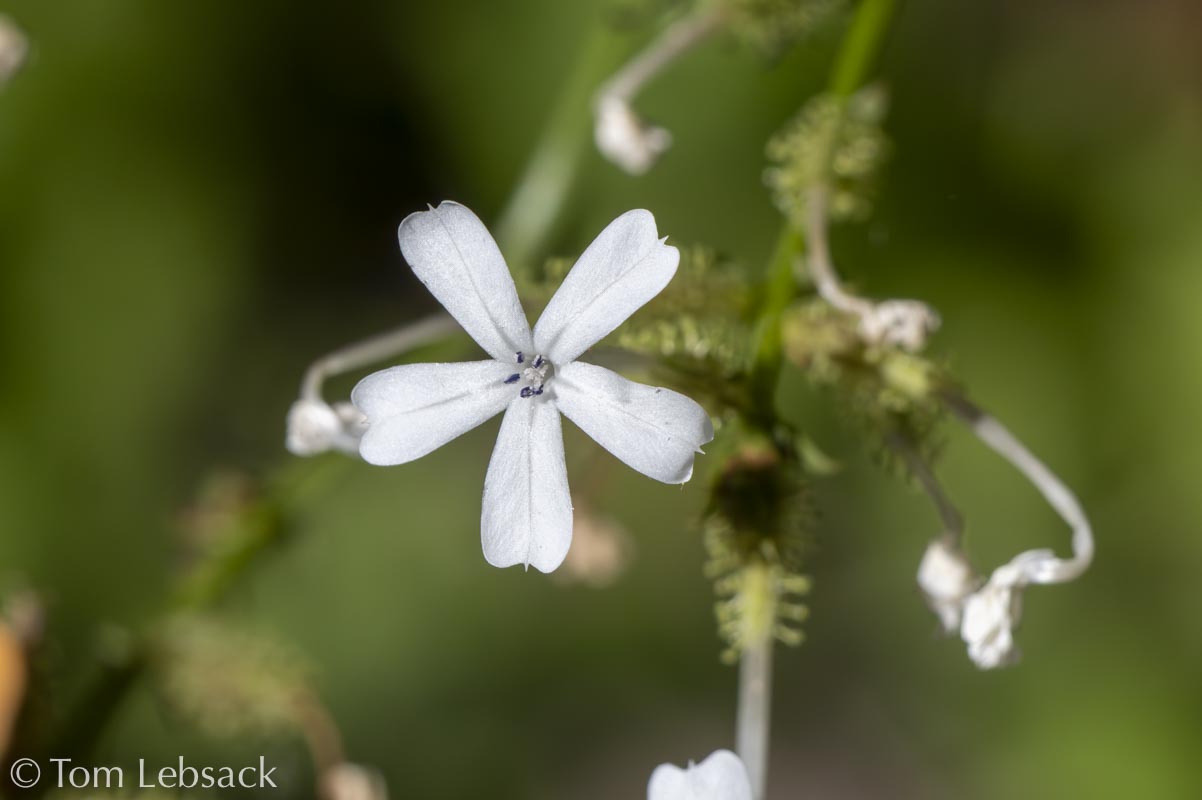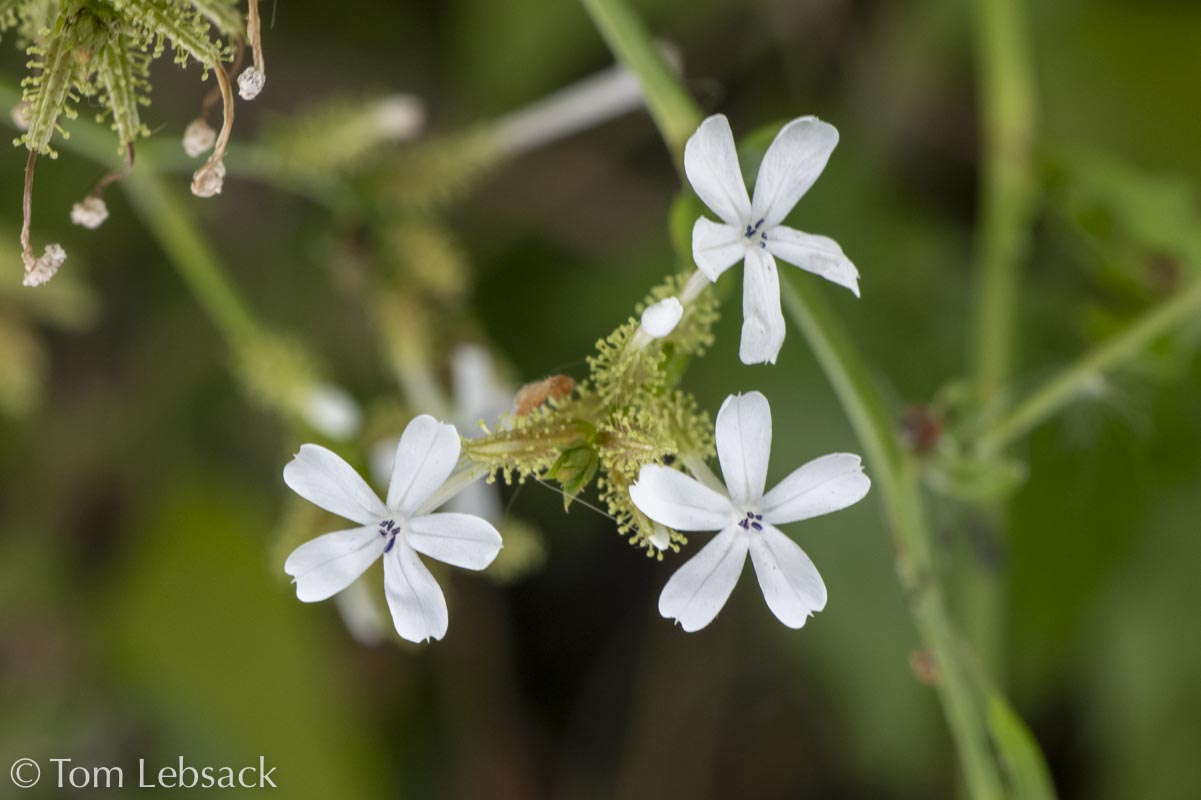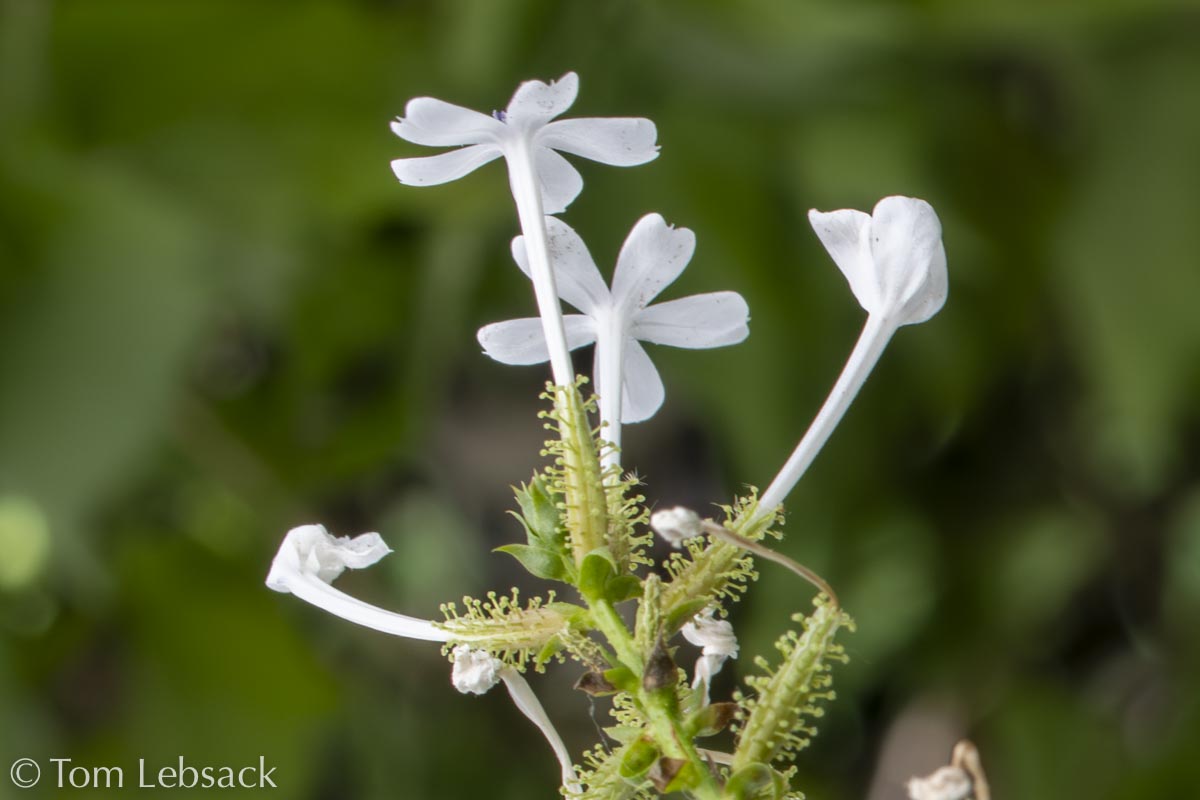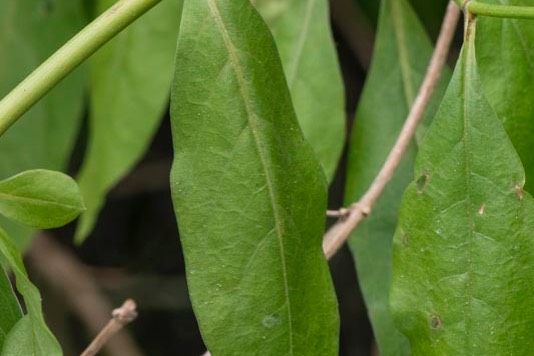Texas Wildbuds
Plumbago zeylanica
(Wild Leadwort)
| Scientific Name | Plumbago zeylanica (Plumbago scandens) | USDA PLANTS Symbol | PLZE |
| Common Name | Wild Leadwort, Doctorbush | ITIS Taxonomic Serial No. | 21340 |
| Family | Plumbaginaceae (Plumbago) | SEINet Reference |
Click Here |
| Description | Habitat: Various soils in palm groves, thickets, roadsides and fencerows in the Lower Rio Grande Valley; also in rocky areas in canyons of Presidio County. Plant: Perennial with woody, brittle, slender stems; prostrate, climbing, or erect and smooth; stems up to 40 inches long. Leaves: Alternate, ovate to elliptic-lanceolate, 2 to 4 inches long and 1 to 1-5/8 inches wide; acute or acuminate tips and entire margins. Inflorence: Slender spikes up to 6 inches long of several to many white or blue-tinged, tubular flowers (floral tube 1/2 to 1-1/8 inches long) with 5 spreading lobes, up to almost 1 inch across; 5 stamens with blue anthers and single style; calyx is tubular less than 3/8-inch long and covered with glandular bristles. Bloom Period: Year-round. References: P. scandens in "Manual of the Vascular Plants of Texas" by Correll and Johnston and “Trees and Shrubs of the Trans-Pecos and Adjacent Areas” by A. Michael Powell; P. zeylanica in SEINet. |
BONAP Distribution Map Map Color Key Map Color Key |
Texas Status: Native |
Banner photo of Castilleja indivisa and Lupinus ssp. taken along FM 1323 north of Johnson City, Blanco County
© Tom Lebsack 2025
Every attempt is made to provide accurate, up-to-date, and relevant information, but the completeness or accuracy of any information presented on this website cannot be guaranteed. I use authoritative references to insure high standards of accuracy and review and update the information frequently.





